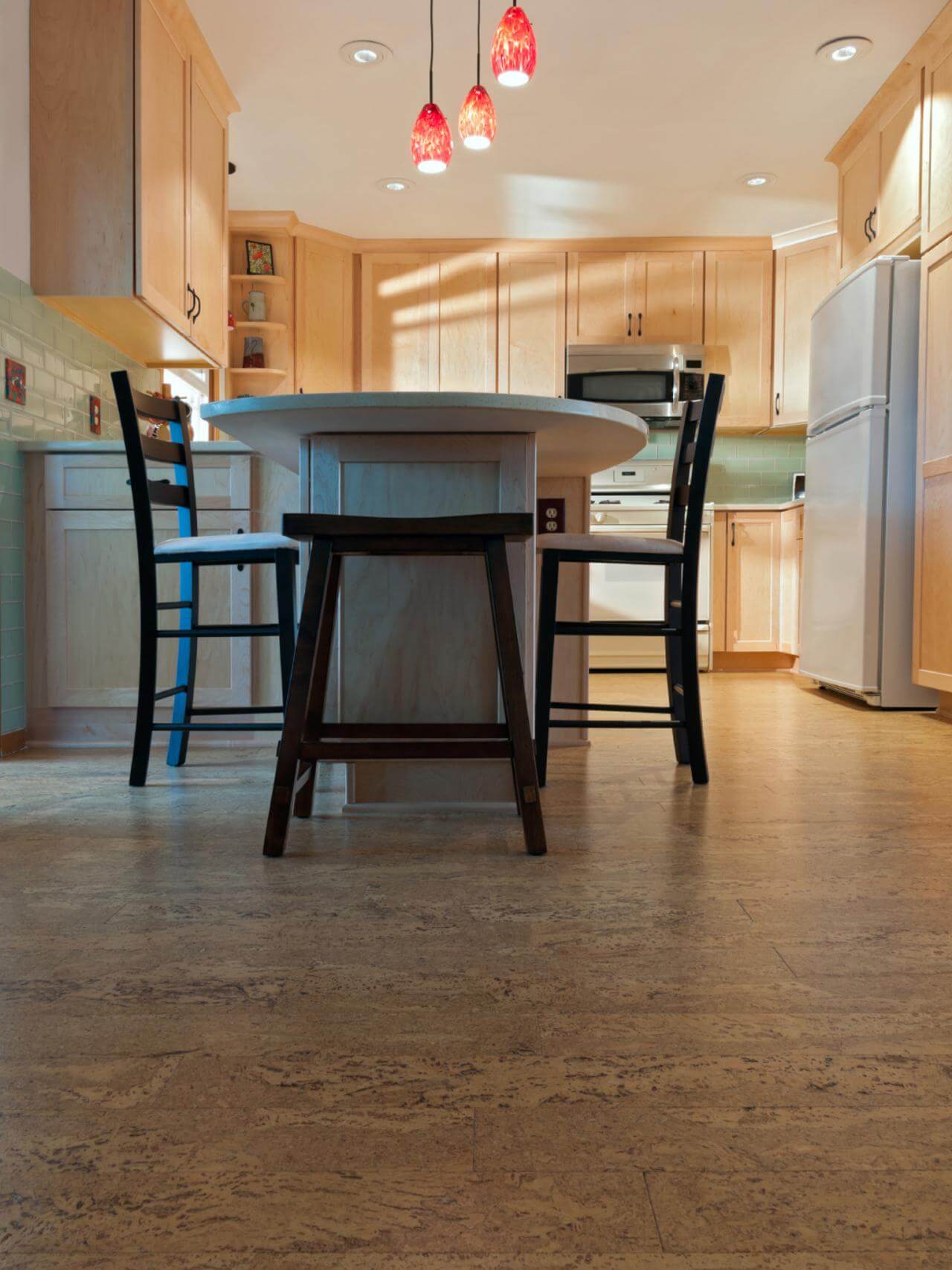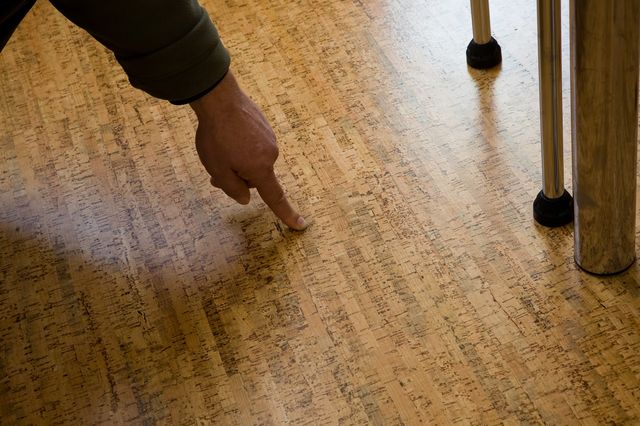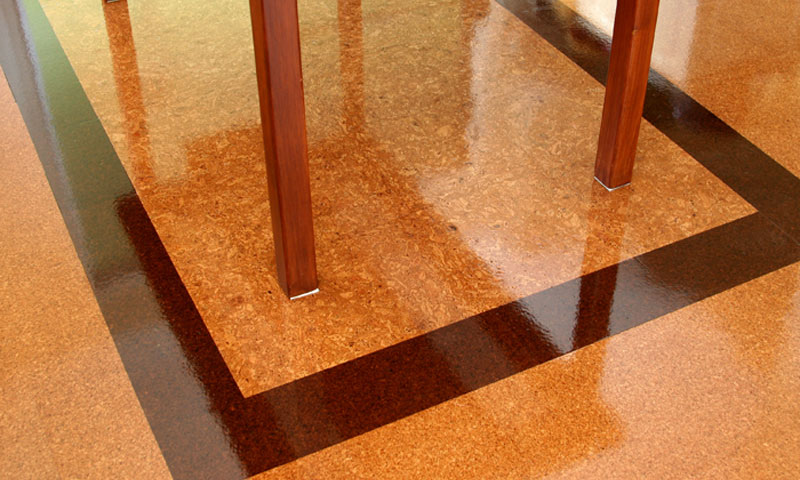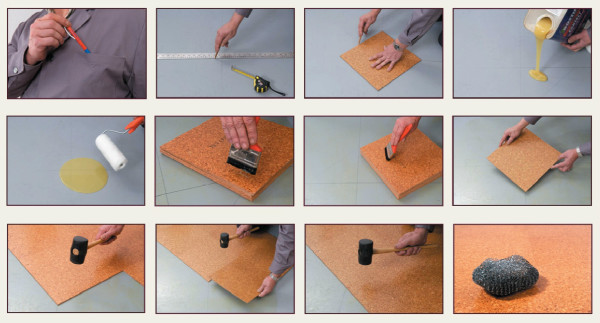When to Refinish: Signs Your Cork Floor Needs Attention
Refinishing cork flooring can restore its natural beauty and extend its life, but knowing when to undertake this process is crucial. Here are key signs that your cork floor needs attention and may benefit from refinishing.
- Visible Scratches and Wear Over time, cork floors can develop scratches and scuffs from regular foot traffic, furniture movement, and other daily activities. When these imperfections become noticeable and start to detract from the floor’s appearance, it may be time to consider refinishing. Minor surface scratches can often be sanded out, while deeper ones may require more extensive treatment.
- Fading and Discoloration Cork flooring can fade or discolor due to prolonged exposure to sunlight and UV rays. If your floor shows signs of uneven color or has lost its vibrant look, refinishing can help restore its original hue. Applying a new coat of finish can also offer UV protection to prevent future fading.
- Water Damage and Stains Cork is naturally resistant to water, but excessive moisture or spills that aren’t promptly cleaned can lead to water damage or staining. Dark spots, swelling, or warping are indications that the floor has been compromised. Refinishing can address these issues by sanding down the affected areas and applying a protective sealant.
- Loss of Shine The protective finish on cork floors can wear down over time, resulting in a dull appearance. If your floor has lost its luster and regular cleaning doesn’t bring back the shine, refinishing is likely needed. This process will remove the worn-out finish and apply a new one, giving the floor a refreshed, glossy look.
- Soft or Spongy Spots Cork floors may develop soft or spongy areas if the underlayment or the cork itself has been damaged. This can happen due to water infiltration or prolonged heavy use. These spots indicate that the structural integrity of the floor is compromised. Refinishing, along with necessary repairs, can restore the floor’s stability and appearance.
- Frequent Cleaning Issues If your cork floor becomes increasingly difficult to clean, with dirt and debris accumulating in scratches and worn areas, it may be time for refinishing. A smooth, well-sealed surface is easier to maintain, and refinishing will provide a new protective layer that resists dirt and stains.

Preparation: Getting Your Cork Floor Ready for Refinishing
Proper preparation is essential for a successful cork floor refinishing project. Ensuring the floor is ready will lead to better results and a longer-lasting finish. Here’s how to prepare your cork floor for refinishing.
Clear the Area Begin by removing all furniture, rugs, and any other items from the room. This not only gives you clear access to the entire floor but also prevents dust and debris from settling on your belongings. Make sure to move everything to another room or area where it won’t be affected by the refinishing process.
Clean the Floor Thoroughly Clean the cork floor to remove any dirt, dust, and debris. Use a vacuum cleaner with a soft brush attachment to avoid scratching the surface. Follow up with a damp mop and a mild cleaner suitable for cork flooring. Ensure the floor is completely dry before proceeding to the next step.
Inspect for Damage Carefully inspect the floor for any damage, such as deep scratches, dents, or water stains. Note any areas that may need special attention during the refinishing process. If there are significant issues, you might need to repair these spots before refinishing to ensure a uniform and smooth surface.
Sanding the Floor Sanding is a critical step in the preparation process. Use a fine-grit sandpaper to gently sand the surface of the cork floor. This will remove the old finish and smooth out minor imperfections. Be careful not to sand too aggressively, as cork is softer than other flooring materials and can be damaged easily.
Vacuum and Wipe Down After sanding, vacuum the floor thoroughly to remove all dust particles. Even small amounts of dust can interfere with the adhesion of the new finish. Wipe down the floor with a damp cloth to ensure it is completely clean and dust-free. Allow it to dry completely before applying any new finish.
Protect Surrounding Areas Use painter’s tape to protect baseboards, walls, and any other areas that should not be refinished. Cover vents and doorways to prevent dust from spreading to other parts of the house. Properly ventilate the area by opening windows or using fans, as this will help with drying times and reduce the fumes from the finishing products.
Step-by-Step Refinishing Process for Cork Floors
Refinishing cork floors involves several precise steps to restore their beauty and durability. Follow this detailed guide to ensure a successful refinishing project.
Gather Your Supplies Before starting, gather all necessary supplies, including sandpaper (fine and medium grit), a vacuum cleaner, a mop, painter’s tape, a high-quality cork floor finish (water-based or oil-based), brushes or rollers, and protective gear like gloves and masks. Having everything on hand will streamline the process.
Sand the Floor Begin by sanding the cork floor with medium-grit sandpaper to remove the old finish and smooth out surface imperfections. Use a sanding machine for larger areas and a sanding block for corners and edges. After the initial sanding, switch to fine-grit sandpaper for a smoother finish. Be gentle to avoid damaging the cork.
Clean Up Dust and Debris Once sanding is complete, thoroughly vacuum the entire floor to remove all dust particles. Follow up with a damp mop to pick up any remaining dust. Ensuring the floor is completely clean is crucial for the new finish to adhere properly. Allow the floor to dry completely before moving to the next step.
Apply the First Coat of Finish Choose a high-quality cork floor finish, either water-based or oil-based, depending on your preference. Apply the first coat using a brush or roller, working in small sections to ensure even coverage. Follow the grain of the cork and avoid over-applying, as this can lead to uneven drying and a sticky surface. Let the first coat dry according to the manufacturer’s instructions.
Sand Between Coats After the first coat has dried, lightly sand the surface with a fine-grit sandpaper. This step helps to smooth out any imperfections and ensures better adhesion for subsequent coats. Vacuum and wipe down the floor again to remove all sanding dust. Repeat this process after each coat of finish.
Apply Additional Coats Apply at least two to three additional coats of finish, allowing each coat to dry completely and sand lightly between coats. More coats may be necessary for high-traffic areas or if you desire a thicker protective layer. The final coat should be left to cure for at least 24 to 48 hours before allowing foot traffic or replacing furniture.
Maintenance Tips: Keeping Your Refinished Cork Floor in Top Condition
Proper maintenance is key to preserving the beauty and durability of your refinished cork floor. Follow these tips to keep your floor looking its best for years to come.
Regular Cleaning Regular cleaning is essential to maintain the appearance of your cork floor. Sweep or vacuum the floor frequently to remove dirt and debris that can cause scratches. Use a vacuum cleaner with a soft brush attachment to avoid damaging the surface. Damp mop with a mild cleaner specifically designed for cork flooring to keep it clean and fresh.
Protect from Moisture Cork flooring is naturally resistant to moisture, but excessive water exposure can still cause damage. Wipe up spills immediately to prevent water from seeping into the floor. Place mats at entrances to absorb water and dirt from shoes. In areas prone to moisture, such as bathrooms or kitchens, consider using additional protective measures like waterproof mats.
Use Furniture Pads To prevent scratches and dents, place felt pads under the legs of furniture. Avoid dragging furniture across the floor; instead, lift and move items to protect the cork. Use area rugs in high-traffic areas to reduce wear and tear. Make sure rugs have non-slip backings to prevent slipping and protect the floor.
Avoid Harsh Cleaners Harsh chemicals and abrasive cleaners can damage the finish on your cork floor. Stick to mild, pH-balanced cleaners designed for cork or hardwood floors. Avoid using steam mops, as the heat and moisture can cause the cork to swell or warp. Regularly dust and mop the floor to maintain its shine and prevent buildup of dirt and grime.
Regular Maintenance Checks Periodically inspect your cork floor for signs of wear, such as scratches, dullness, or areas where the finish has worn thin. Addressing minor issues promptly can prevent more extensive damage. Reapply a coat of finish every few years, depending on the level of traffic and wear, to maintain the floor’s protective layer and keep it looking new.
Climate Control Cork flooring can expand and contract with changes in temperature and humidity. Maintain a consistent indoor climate to minimize these effects. Use a humidifier in dry conditions and a dehumidifier in humid environments to keep the relative humidity levels stable. This will help prevent the cork from shrinking, expanding, or developing gaps.
Common Mistakes to Avoid When Refinishing Cork Floors
Refinishing cork floors can be a rewarding project, but there are common mistakes that can lead to subpar results. Avoid these pitfalls to ensure a successful and lasting finish.
Skipping Proper Cleaning One of the most critical steps in the refinishing process is thorough cleaning. Failing to remove all dust, dirt, and debris before applying the finish can result in an uneven, rough surface. Always vacuum and mop the floor after sanding and ensure it is completely clean and dry before proceeding with the finish application.
Using the Wrong Products Using inappropriate products, such as harsh chemicals or finishes not designed for cork flooring, can damage the floor and compromise its durability. Always use products specifically recommended for cork floors, including cleaners, sandpaper, and finishes. Check the manufacturer’s guidelines to ensure compatibility and optimal results.
Over-Sanding the Floor Cork is a soft material, and excessive sanding can wear it down or create uneven surfaces. Sand lightly and carefully, focusing on removing the old finish and smoothing out minor imperfections. Over-sanding can lead to a thinner floor and reduce its lifespan, so it’s crucial to strike the right balance.
Inadequate Ventilation Proper ventilation is essential when refinishing cork floors, as fumes from finishes and sealants can be harmful. Ensure the area is well-ventilated by opening windows and using fans to circulate air. This not only protects your health but also helps the finish dry more evenly and quickly.
Rushing the Drying Process Patience is key when refinishing cork floors. Each coat of finish needs sufficient time to dry completely before the next one is applied. Rushing this process can result in a sticky or uneven surface. Follow the manufacturer’s recommended drying times and avoid walking on the floor until the final coat is fully cured.
Neglecting Protective Measures Protecting the surrounding areas from dust and spills is crucial for a successful refinishing project. Use painter’s tape to cover baseboards and adjacent surfaces. Lay down drop cloths to catch any drips or spills. Failing to take these precautions can lead to a messy, unprofessional result and additional cleanup.
Common FAQs
Refinishing cork flooring can raise several questions for homeowners. Here are answers to some of the most frequently asked questions to help guide you through the process.
How often should I refinish my cork floor?
The frequency of refinishing depends on the level of traffic and wear. Generally, cork floors should be refinished every 5 to 7 years. High-traffic areas may require more frequent refinishing, while less-used areas can go longer between treatments.
Can I refinish cork floors myself, or should I hire a professional?
Refinishing cork floors can be a DIY project if you have the necessary tools and skills. However, hiring a professional can ensure a flawless finish and save you time and effort. Consider your level of expertise and the complexity of the job before deciding.
What type of finish is best for cork floors?
Both water-based and oil-based finishes are suitable for cork floors. Water-based finishes dry faster and have lower VOC emissions, making them an eco-friendly choice. Oil-based finishes tend to be more durable and provide a richer color. Choose based on your preference and the specific needs of your floor.
Can I change the color of my cork floor when refinishing?
Yes, you can change the color of your cork floor during the refinishing process. After sanding, you can apply a stain before the finish to achieve the desired color. Ensure the stain is compatible with cork and follow the manufacturer’s instructions for application and drying times.
How long does it take to refinish a cork floor?
The time required to refinish a cork floor depends on the size of the area and the drying times for each coat of finish. Generally, the process can take anywhere from 3 to 5 days, including preparation, sanding, and applying multiple coats of finish.
What should I do if my cork floor has deep scratches or damage?
Deep scratches or significant damage may require more extensive repairs before refinishing. You can fill deep scratches with a cork filler or wood putty that matches the floor’s color. If the damage is severe, consider replacing the affected tiles or planks. Once repairs are complete, proceed with the refinishing process to ensure a uniform appearance.
Refinishing – Harms Hardwood
Cork Flooring-What To Know
APC Cork: Frequently Asked Question
Related Posts:





